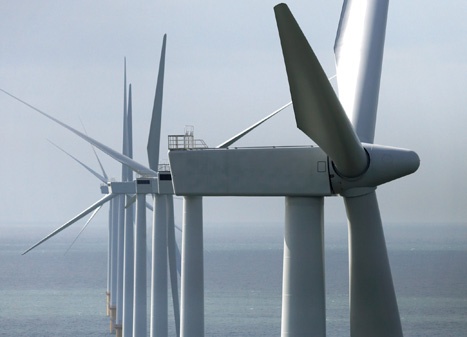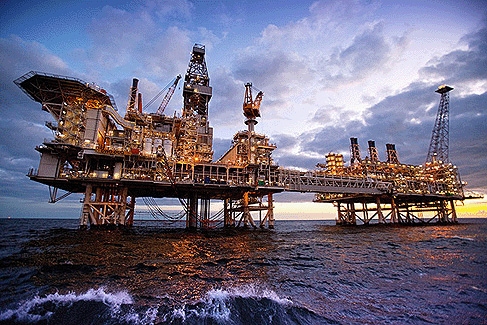In the run up to the launch of L&T’s new subsidiary Water & Renewable Energy Independent Company in April, the group said it would target substantial growth in the water and renewable energy sectors, particularly identifying opportunities in the Gulf regions.

‘We are addressing offshore wind farms in India, and also doing photovoltaics as well,’ said Emsley. ‘We may even do anaerobic digestion…[the company] believes it can make offshore wind jackets to address the UK offshore wind market and apply its expertise in offshore oil operations to the renewables market.’
Emsley cited the UK government’s delay on firming-up plans for a feed-in tariff with contracts for difference as a major stumbling block for companies such as L&T that are keen to participate in the European renewable energy sector.
‘[L&T] looked at [the offshore wind industry] three years ago and all they saw was procrastination on the part of government,’ he said. ‘Nothing’s happening; it’s a vacuum. Until money is changing hands, we won’t [commit].’
L&T has readily available capacity to serve the European offshore wind market, provided it can keep the costs of exporting the structures from its existing manufacturing facilities low.
Its upstream division already manufactures and installs jackets for offshore oil and gas platforms. With three jacket-fabrication yards in India and Oman and a production capacity of 150,000 tonnes-a-year, bigger than most European yards, its specialty in offshore design and projects could have vast applications in the offshore wind sector.
‘The design principles are exactly the same in oil and gas as in [offshore wind],’ said Emsley. [The jackets] are operating in similar conditions; need similar materials; and the construction methodology is similar… If you are fabricating these in India, you will do so much cheaper than in Europe. Can we transport them 5,000 miles and still be cheaper? We are looking into it.
‘DONG is [rumoured to be] looking to ship jackets from China. I’m pretty sure we can [also do so cost effectively]. We’ve taken on Korean contractors in the UK, which are [in favour of] jacket structures. If they can do it competitively, we can too.’
As offshore wind farms go further into deeper waters and the scale of the technology increases, demand for jacket technology is expected to increase significantly.
Although it would not need to invest in large factory revamps, L&T’s entry into the sector has the potential to stimulate much-needed growth in Europe’s offshore wind supply chain.
‘We are set up to do many designs of jacket structures,’ said Emsley. ‘We’d only need to take note of logistics and make sure we had goods [going] inwards and outwards so we could set up a production line. We are bespoke at the moment. We would need to have more of a production line than we have.’
L&T’s investment in a reorganisation of its jacket-manufacturing business could accelerate the build-out of large-scale turbines in offshore wind farms under the UK Crown Estate’s seabed leasing rounds.
As offshore wind farms go further into deeper waters and the scale of the technology increases (Vestas is already developing an 8 MW turbine), demand for jacket technology is expected to increase significantly.
‘The sector has not really gone that far to look at jackets,’ said Emsley. ‘Most UK projects are monopiles or tripods. It’s only when you get further into deeper water that you need to look at it; or if you go for larger turbines. The 6 MW Siemens turbines will need a jacket, even in shallow water…We anticipate going forward there will be number of jackets for North Sea developments.’
Scale of production is another factor that oil and gas engineering, procurement and construction contractors have to their advantage in the offshore wind sector. An offshore wind jacket is on average just one-third to half of the size of a typical oil and gas jacket; and while oil and gas jackets have been installed at depths of up to 100 metres, wind turbines are installed at up to 45 metres.

The fixed jacket for the Dagny oil field in the North Sea, for example, was 142 metres tall and weighed nearly 16,000 tonnes. By comparison, the Alpha Ventus wind farm used jackets of just 50 metres in height that weighed about 500 tonnes each.
‘[Offshore wind is] an adjacent market to fabricate jackets,’ said Emsley. ‘On average we do jackets of 7,000-10,000 tonnes. The jacket size required for an offshore wind farm is 5-800 tonnes. There is a whole magnitude of difference in scale.’
L&T plans to tackle its lack of specific North Sea environmental data through strategic partnerships. Emsley said the group is already in conversations with an undisclosed Norwegian wind jacket design consultancy company that are subject to non-disclosure agreements.
The question is whether L&T can justify the cost margin for transporting the jackets. Emsley remains confident that the projects remain viable with the shipping costs factored in.
This article originally appeared on www.cleanenergypipeline.com a clean energy news service operated by VB Research.




Red Bull makes hydrogen fuel cell play with AVL
Formula 1 is an anachronistic anomaly where its only cutting edge is in engine development. The rules prohibit any real innovation and there would be...